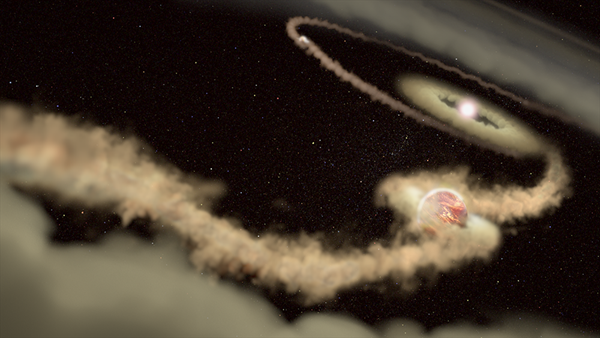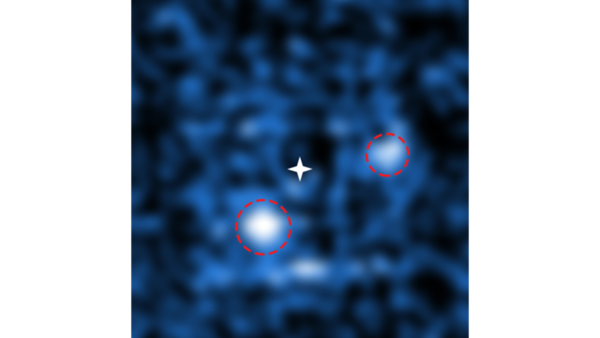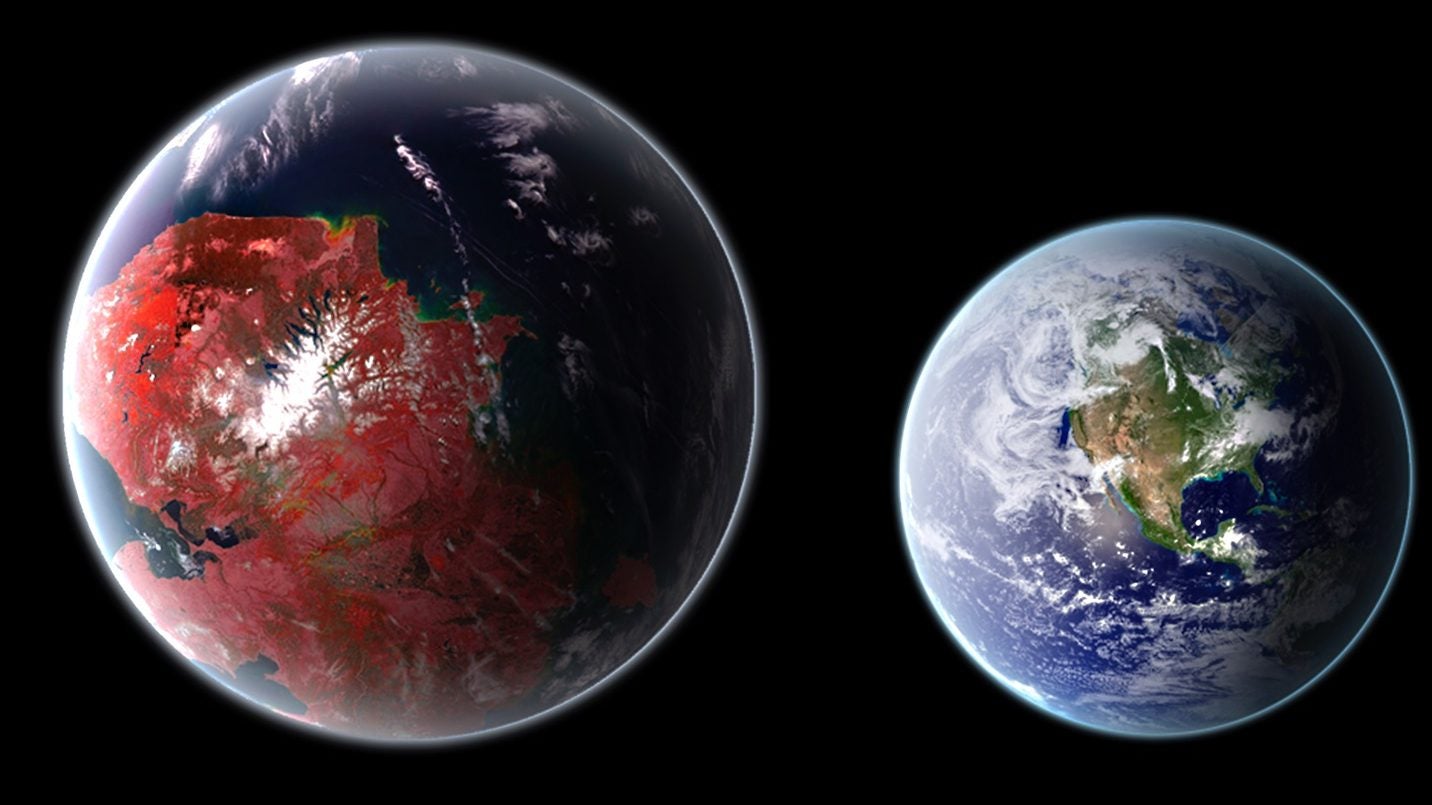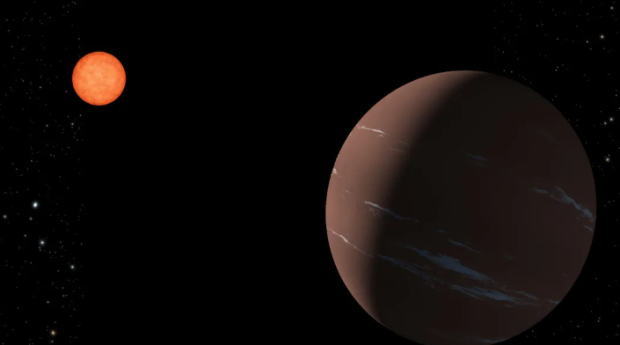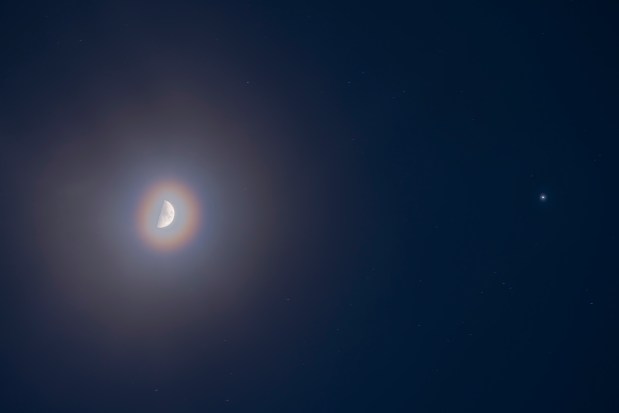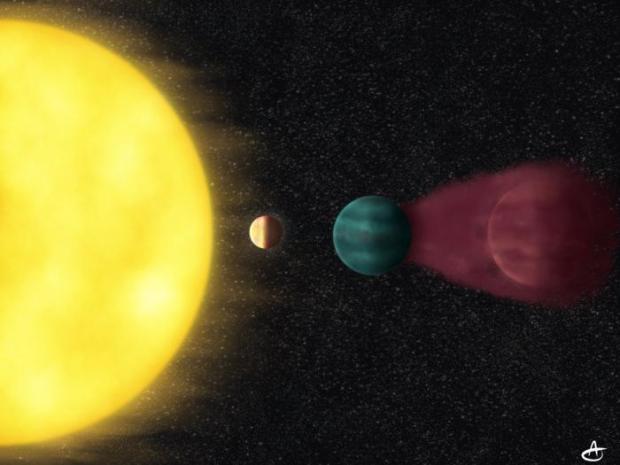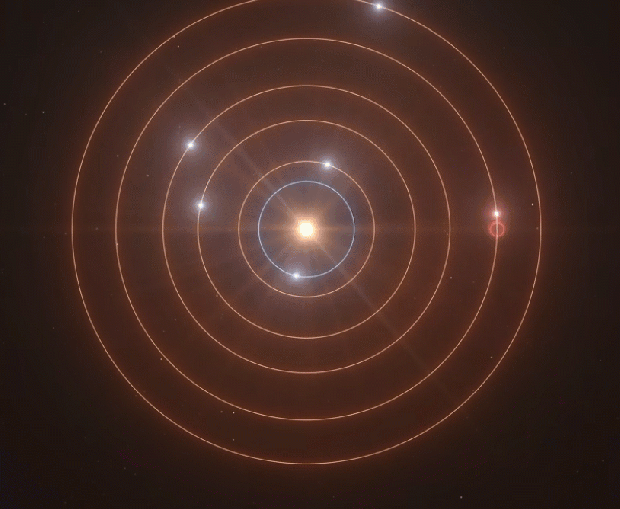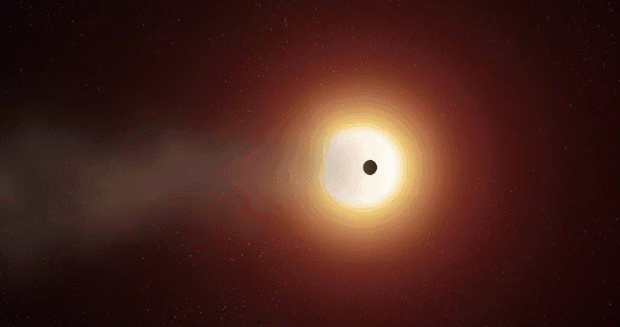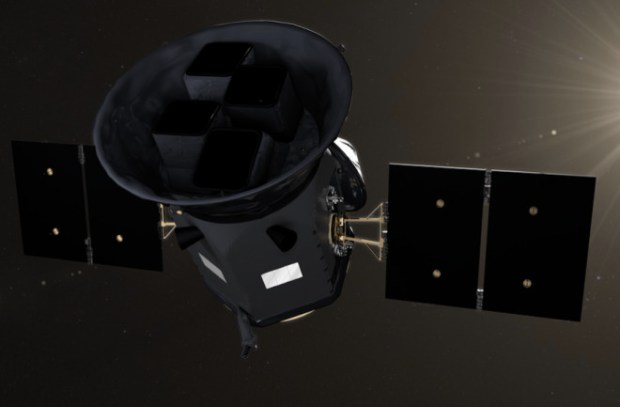So researchers were pleasantly surprised to turn up a second planet orbiting PDS 70, a young star system about 370 light-years away from Earth. It’s only the second multi-planet system observed by direct imaging, and the image shows the star system still in formation, providing valuable evidence about how planetary systems form and evolve.
Mind the Gap
The first planet found in the system is called PDS 70 b, and it was discovered in 2018. It weighs between 4 and 17 times the mass of Jupiter, and orbits about as far away from its star as Uranus does from our own sun.
The new planet is named PDS 70 c, and it orbits about as far as Neptune does in our solar system. It weighs less than its neighbor, at between 1 and 10 Jupiter masses. Astronomers led by Sebastiaan Haffert, from Leiden Observatory, used the European Southern Observatory’s Very Large Telescope in Chile to take the images. They published their findings Monday in Nature Astronomy.
These kinds of gaps in the dust clouds surrounding young stars have been seen before, and exoplanets are often pointed to as the source of these gaps. As the planets orbit, their gravity sucks nearby material inward, eventually hoovering up all of the nearby dust and gas, creating a gap. Eventually, a planet will run out of material and stop growing. This is also how researchers think the planets in our own solar system formed. But in many systems, only the gaps are visible, and not the planets themselves.
PDS 70 is direct confirmation of both planets and gaps in the same system, lending strong weight to astronomers’ theories of how planets form. Furthermore, the two planets are orbiting in a resonance, with the inner planet circling its star twice as often as the outer planet. Such resonances can cause the planets to migrate over time, and researchers suspect that this kind of resonance between Jupiter and Saturn shaped much of the solar system’s early history.

